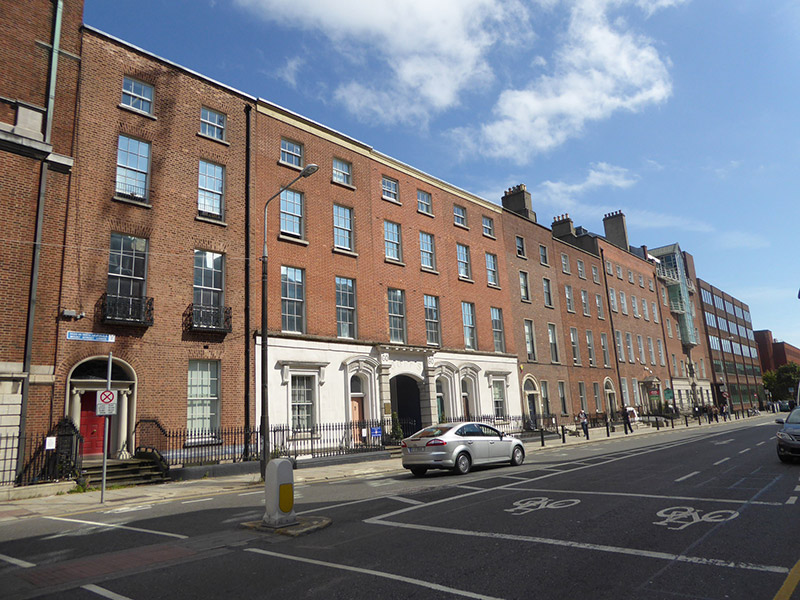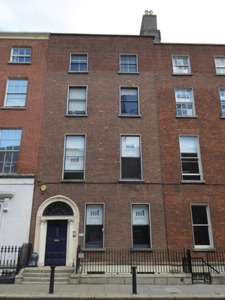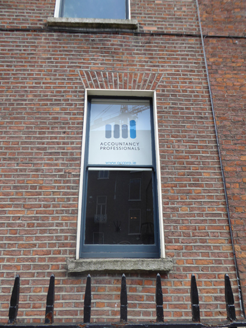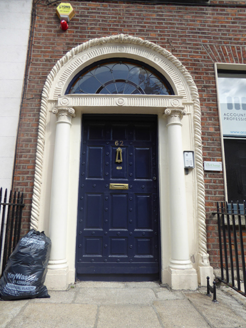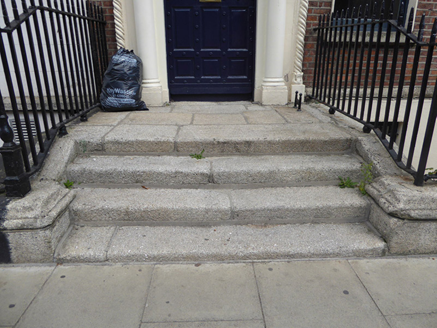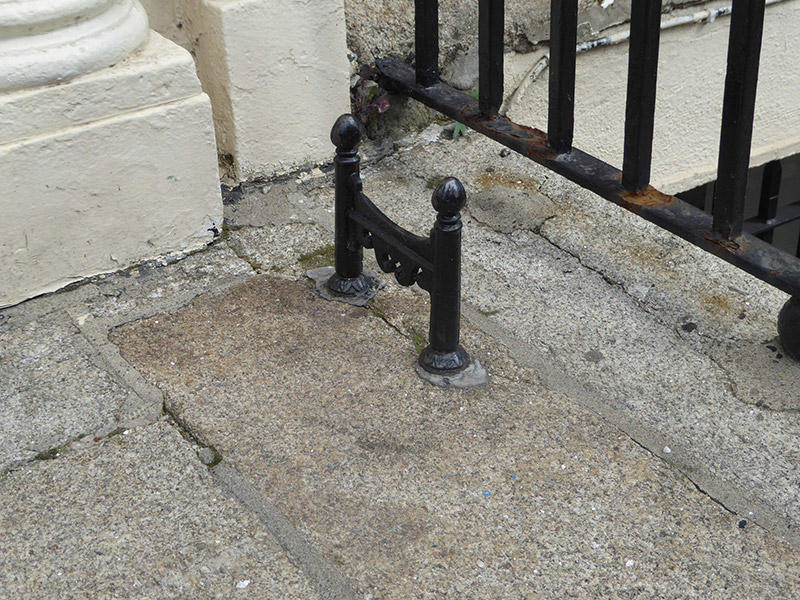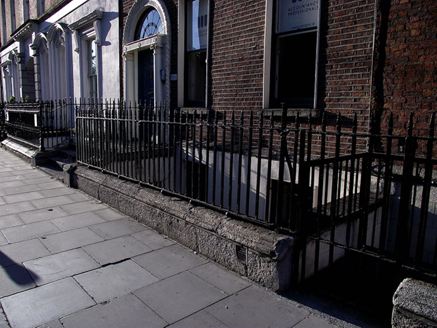Survey Data
Reg No
50100388
Rating
Regional
Categories of Special Interest
Architectural, Artistic
Original Use
House
In Use As
Office
Date
1800 - 1820
Coordinates
316906, 233552
Date Recorded
07/06/2016
Date Updated
--/--/--
Description
Attached two-bay four-storey former house over basement, built c. 1810, with three-bay rear elevation having two-bay bowed projection one storey lower than rest of building, and with single-storey abutment to rear of latter. Now in commercial office use. M-profile roof, hipped to west, having rebuilt brick parapet with granite coping, shouldered rendered chimneystack with clay pots, and parapet gutters. Flemish bond red brick walling, refaced to top floor in English garden wall bond over header course, painted rendered basement with granite plinth course above; rear elevation has render to east bay, and exposed brick to bow. Square-headed window openings, diminishing in height to upper floors, with patent reveals, granite sills, brick voussoirs and timber sliding sash windows, six-over-six pane to top floor and one-over-one pane elsewhere to front facade; rear elevation has replacement six-over-six pane to top floor, six-over-six pane to upper floors of bow, and round-headed three-over-six pane stairs window and six-over-six pane elsewhere. Round-headed doorcase with barley-sugar-moulded architrave, stylized Ionic columns, fluted frieze with rosettes and cornice, decorative leaded petal fanlight and twelve-panel timber door. Granite entrance platform with cast-iron boot-scrape and four steps to street level. Basement area enclosed by wrought-iron railings on moulded granite plinth. Rear of plot has yard shared with No. 63.
Appraisal
An early nineteenth-century Georgian house that has a refaced top floor and was likely built in conjunction with No. 63. Despite some loss of original detailing, the overall appearance is relatively well-retained, characterized by elegant proportions, good setting features and a highly decorative doorcase featuring a barley-sugar architrave and a decorative petal fanlight. The setting to the street is also intact. Lower Mount Street was constructed between the late 1790s and the mid-nineteenth century, but the quality of the original streetscape has been much degraded by widespread fabric alterations and the insertion of late twentieth-century office blocks. No. 62 thus contributes strongly to the historic building stock of the street and to the wider core of south central Dublin City.
